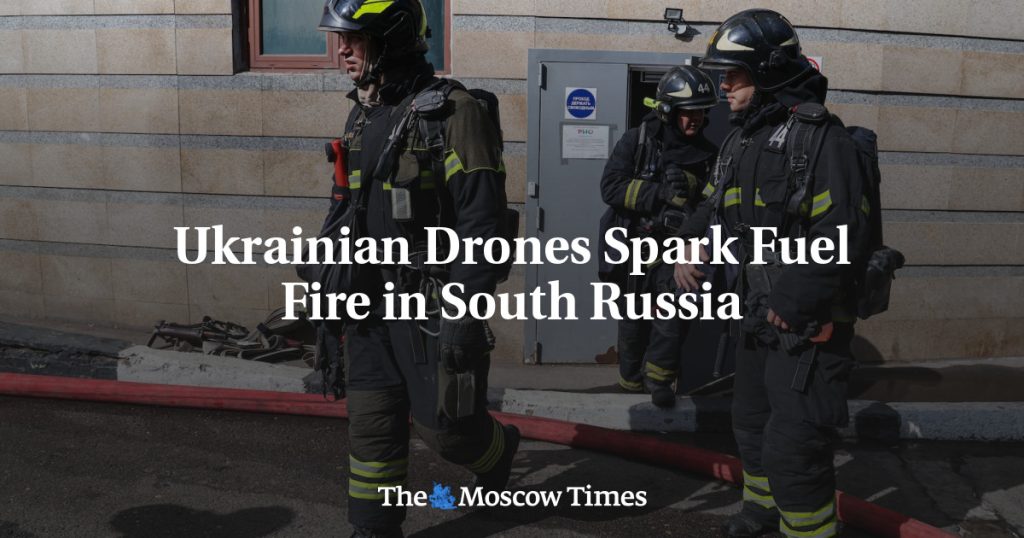Ukrainian drones attacked an oil storage facility in Russia’s southern Rostov region, causing a large fuel fire, with videos on social media showing thick black smoke and flames at the site of the blaze. The attack occurred in the town of Proletarsk, leading to a diesel fuel fire due to falling debris from the drone strike. Following the initial attack, a second drone attack occurred, suspending firefighting efforts temporarily. However, no injuries were reported, and firefighting resumed after the second attack.
The Ukrainian army claimed responsibility for the attack on the “Kavkaz” oil and petroleum storage facility in the Rostov region, citing the facility’s association with supplying oil and petroleum products to the Russian occupation army. This attack is part of the ongoing efforts to undermine the military-economic potential of the Russian Federation. Proletarsk is located approximately 250 kilometers from the Ukrainian border and 350 kilometers from areas of fighting in eastern Ukraine. Russia’s Defense Ministry reported shooting down five “aircraft-type” Ukrainian drones, including two over the Rostov region.
Kyiv has been targeting oil and gas facilities in Russia as part of what it considers a fair retaliation for attacks on its own energy infrastructure since the conflict began in 2022. Ukrainian President Volodymyr Zelensky praised the forces for targeting oil facilities in Russia and expressed hope that these attacks would help bring a just end to the conflict. The drone attacks coincide with Ukraine’s ongoing cross-border assault into Russia’s Kursk region, claiming control over more than 80 settlements in the area.
The ongoing conflict between Ukraine and Russia has seen continued violence and retaliation from both sides. The use of drones to target critical infrastructure, such as oil and petroleum storage facilities, has become a common tactic in the conflict. The attacks on oil facilities are seen as a strategic move to weaken Russia’s military and economic capabilities. Despite efforts from both sides to reach a resolution, the conflict persists with cross-border assaults and drone attacks occurring regularly.
The escalating situation in the Rostov region highlights the proximity of the conflict to border areas and the potential for further escalation. The attacks on oil facilities in Russia have drawn international attention and condemnation, with fears of the conflict spreading beyond the immediate region. Efforts to de-escalate the conflict and reach a peaceful resolution remain challenging as both sides continue to engage in military actions and retaliatory measures.
As the conflict continues, the impact on civilians and critical infrastructure in both Ukraine and Russia remains a significant concern. The use of drones in attacks on oil facilities poses environmental and safety risks, with the potential for devastating consequences. International efforts to mediate and resolve the conflict are ongoing, but the situation remains volatile with no immediate end in sight. The need for a peaceful resolution and the protection of civilians in the conflict zone is paramount as the violence and destruction persist.


